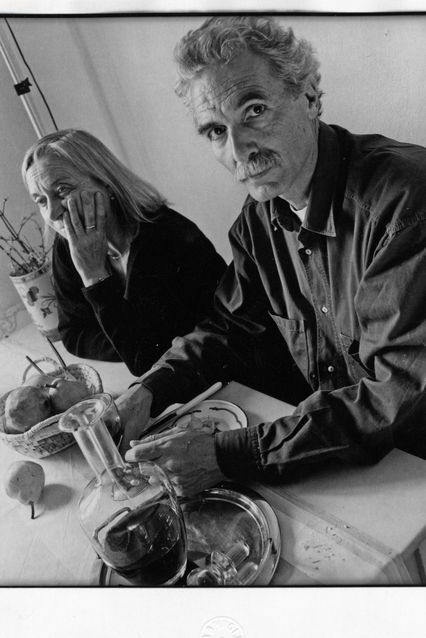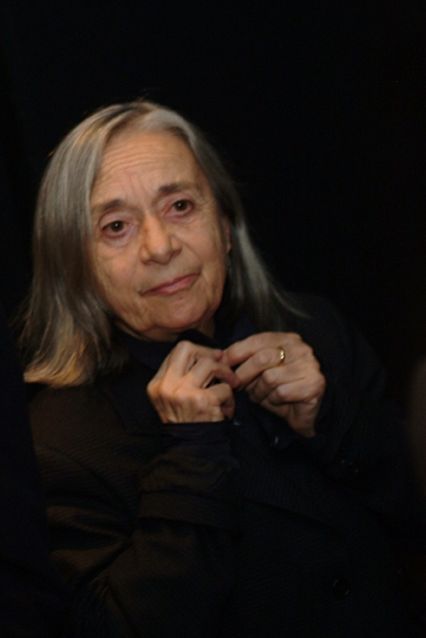The film is based on scattered footage that has been gathered together in a new form of compilation. Two boats of Caligula's lie at the bottom of Lake Nemi. In order to recover them, the lake is drained. Mussolini is behind the undertaking. On 20th October 1927 he presses a lever to initiate the draining of the lake. By the following summer the first boat is completely uncovered. Over the next few years the second boat comes to the surface. A diviner with a pendulum unsuccessfully looks for the third of Caligula's boats in the mud.
Changes in the public image of Mussolini who comes back to Nemi on 21 April, 1940. He inaugurates the museum where the two boats have been housed. From the crowd he receives the ritual gifts that are reminiscent of the ancient legend of Lake Nemi.
The myth of Diana. The legend. The Golden Bough.
Turner on his travels in Italy in 1919. By Lake Nemi he paints The Golden Bough. In his book, The Golden Bough, James C. Fraser describes the myth and the legend. Ludwig Wittgenstein dedicates a book to Fraser's work: Notes on The Golden Bough. Lake Nemi is Diana's mirror. Her forest has a guardian, the king of the forest. He is a king and murderer at the same time. An escaping slave could tear a golden branch from the sacred tree and kill the king. All the priest kings have died a violent death. During the time of the Romans, Caligula renews the myth of Diana and kills the last priest. On the lake he builds two big ships, that may be floating temples. After he meets with a violent death in 41 AD, the ships mysteriously sink in a storm. An original caption: "Monument to the Romans' expertise in building warships with which Roman conquered the empire and for centuries maintained its universal domination". The film documents the metaphysical idea of the dream of conquering an empire, from its practical implementation in the African campaign. The period from when Mussolini enters Tripoli in 1926 during his "Napoleonic Year" to the mustard gas bombs used in Ethiopia in 1935 and 1936. Epilogue: the museum and the boats are destroyed in a fire started by fleeing German soldiers.
Biography
film director

Yervant Gianikian
Yervant Gianikian (1942), of Armenian descent, studied architecture in Venice. After moving to Milan with Angela Ricci Lucchi, they started focusing on cinema in the mid-70s, making independent and experimental productions, including the screening-performances of “scented films” and, later on, the manual manipulation of archive footage from die-toning to slow motion and various editing combinations. Their films have been screened in some of the most prestigious festivals and museums around the world. They last participated to the Torino Film Festival in 2009 with Electric Fragments N. 6 - Diario 1989. Dancing in the Dark.
FILMOGRAFIA
Erat Sora (cm, 1975), Catalogo comparativo (cm, 1975), Cataloghi non è altro gli odori che sente (cm, 1976), Profumo (cm, 1977), Un prestigiatore una miniaturista (cm, 1978), Milleunanotte (1979), Essence d’absynthe (cm, 1981), Das Lied von der Erde - Gustav Mahler (cm, 1982), Dal polo all’equatore (1986), Frammenti (1987), Passion (cm, 1988), Uomini anni vita (1990), Diario africano (cm, 1994), Aria (cm, 1994), Prigionieri della guerra (1995), Lo specchio di Diana (mm, 1996), Nocturne (cm, 1997), Io ricordo (cm, 1997), Su tutte le vette è pace (1998), Inventario balcanico (2000), Images d’Orient - Tourisme vandale (2001), Corpi. Frammenti elettrici n. 3 (cm, 2002), Rom (Uomini). Frammenti elettrici n. 1 (cm, 2002), Oh! Uomo (2004), Ghiro Ghiro Tondo (2007), Frammenti elettrici n. 6 - Diario 1989. Dancing in the Dark (2009), Pays barbare (2013).

Angela Ricci Lucchi
Angela Ricci Lucchi (Lugo di Romagna, 1942) studied art in Austria with Oskar Kokoschka. After moving to Milan with Yarvant Gianikian, they started focusing on cinema in the mid-70s, making independent and experimental productions, including the screening-performances of “scented films” and, later on, the manual manipulation of archive footage from die-toning to slow motion and various editing combinations. Their films have been screened in some of the most prestigious festivals and museums around the world. They last participated to the Torino Film Festival in 2009 with Electric Fragments N. 6 - Diario 1989. Dancing in the Dark.
FILMOGRAFIA
Erat Sora (cm, 1975), Catalogo comparativo (cm, 1975), Cataloghi non è altro gli odori che sente (cm, 1976), Profumo (cm, 1977), Un prestigiatore una miniaturista (cm, 1978), Milleunanotte (1979), Essence d’absynthe (cm, 1981), Das Lied von der Erde - Gustav Mahler (cm, 1982), Dal polo all’equatore (1986), Frammenti (1987), Passion (cm, 1988), Uomini anni vita (1990), Diario africano (cm, 1994), Aria (cm, 1994), Prigionieri della guerra (1995), Lo specchio di Diana (mm, 1996), Nocturne (cm, 1997), Io ricordo (cm, 1997), Su tutte le vette è pace (1998), Inventario balcanico (2000), Images d’Orient - Tourisme vandale (2001), Corpi. Frammenti elettrici n. 3 (cm, 2002), Rom (Uomini). Frammenti elettrici n. 1 (cm, 2002), Oh! Uomo (2004), Ghiro Ghiro Tondo (2007), Frammenti elettrici n. 6 - Diario 1989. Dancing in the Dark (2009), Pays barbare (2013).
Cast
& Credits
Music: Keith Ullrich.
Production company: Yervant Gianikian, Angela Ricci Lucchi, via Lazzaro Palazzi 19, 20124 Milano, tel. e fax +390229408500.
Co-production: Provincia di Milano, via Guicciardini 6, 20129 Milano, tel. +390277402927 Comune di Sacile, piazza del Popolo 65, 33077 Sacile (Pn), tel. +390434-735014.


